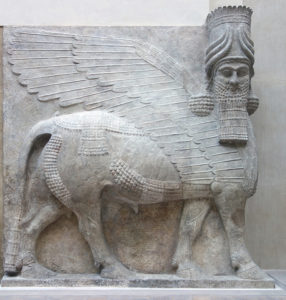Over time the word Humanism has managed to evolve into a relatively broad term. The various branches of humanism can vary from a literary to a cultural, to even a philosophical sense. Regardless, they each share the perspective that affirms some notion of human freedom and progress. Humanists believe that this intellectual movement highlights the power and value of human beings; holding humans solely responsible for the development of individuals by emphasizing concern for man in relation to the world. Meaning man must figure out their path using their intelligence rather than relying on divine or supernatural matters. As a result, most have used that forward-thinking to transcribe and artistically portray the humanistic perspective.

Today we have the opportunity to observe how humanism inspired the art in Greek and Roman culture. With sculptures like the Discobolus and the Doryphoros, we are able to see how the Greeks implemented their humanistic perspective into their artwork. The Greeks and Romans emphasized naturalism, anatomy, nudity, and movement as the progressive development of humanism. The human body was more than intelligence to them, the physicality of it was”divine” and something that should be glorified. The sculpture of Polykleitos, Doryphoros, is a perfect example of how the Greeks and Romans believed the human body should be artistically portrayed. It showed the athletic capability of humans and their beauty. They thought bodies should be celebrated for their beauty and no longer regarded as something sinful. Their sculptures were more about the human experience than paying tribute to their gods.

However, before Polykleitos’s great Doryphoros, humanism wasn’t always a popular opinion. In places like ancient Mesopotamia and ancient Egypt, the art was never meant to be seen by people other than the afterlife for when they needed them. Much of the surviving Mesopotamian and Egyptian art that we see today captures their religious beliefs, specifically, divine pharaohs and gods. The artistic portrayals of these deities statues were often quite stiff, straight up, and featured implementations of animal figures on the human body. Unlike the Greeks and the Romans, the ancient Egyptians, and ancient Mesopotamians weren’t as connected with the perspective of humanism. They didn’t expose the human body as the Greeks did because to them nudity was more of an embarrassment than a sign of power. Instead, they viewed humans as servants and protectors to the gods. Take the Lamassu sculpture, for example, a creature who served to protect the gods; is a celestial being from the ancient Mesopotamian religion bearing the body (and therefore strength) of a bull, but the head (and therefore intelligence) of a human. This sculpture is a perfect example that the artwork during this time didn’t scream human empowerment as it did for religious purposes.




I like how well you described the idea of humanism and how it influenced Greek and roman culture. Very good job.